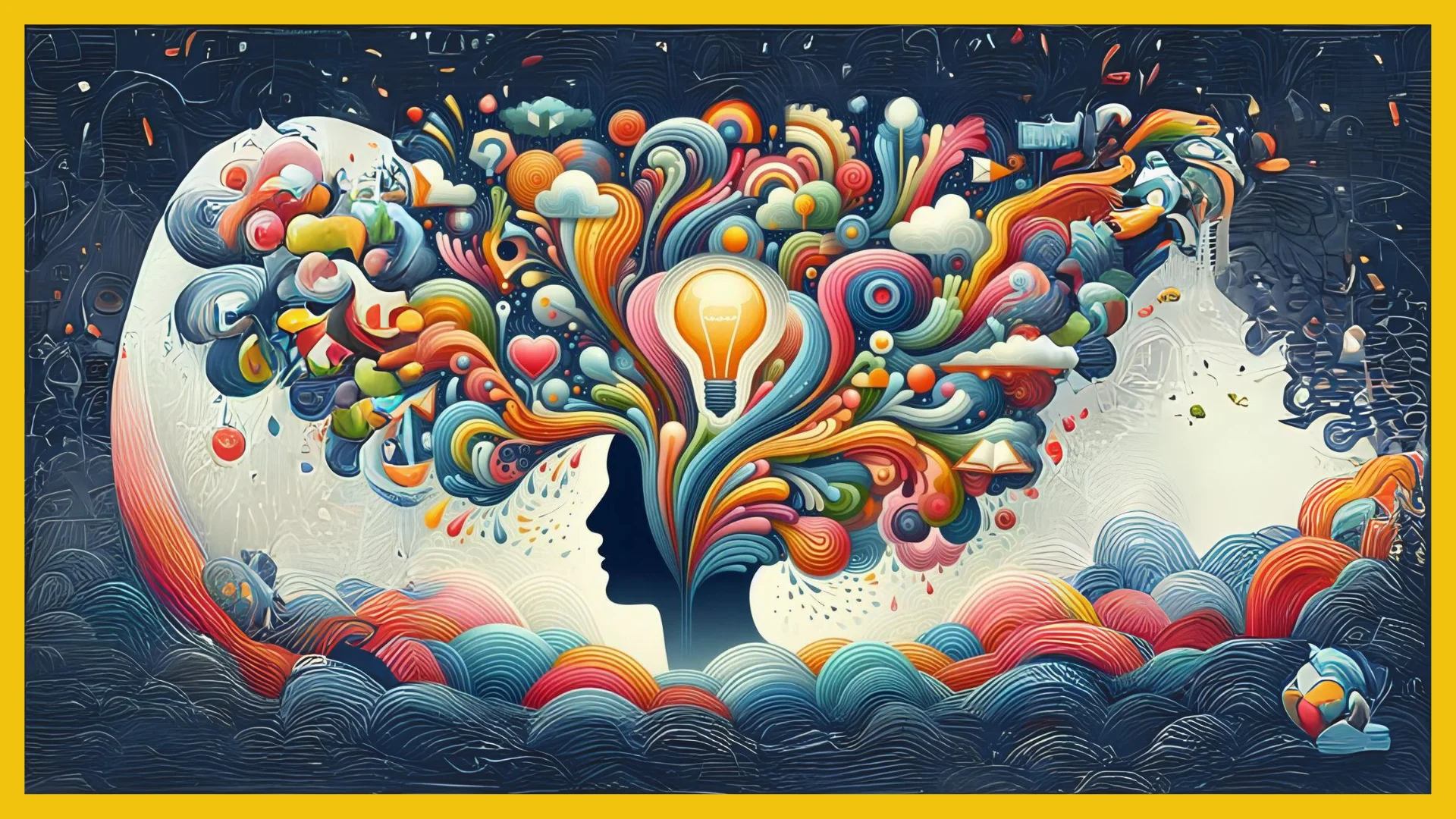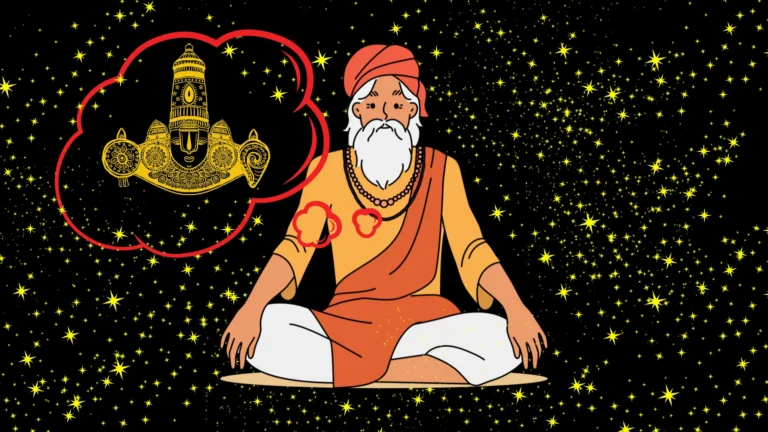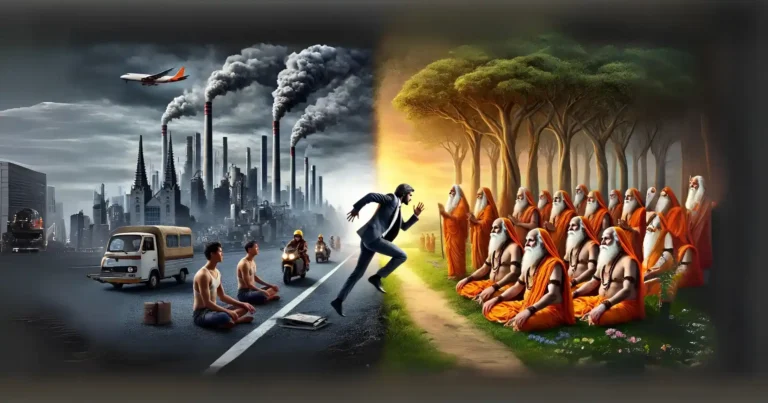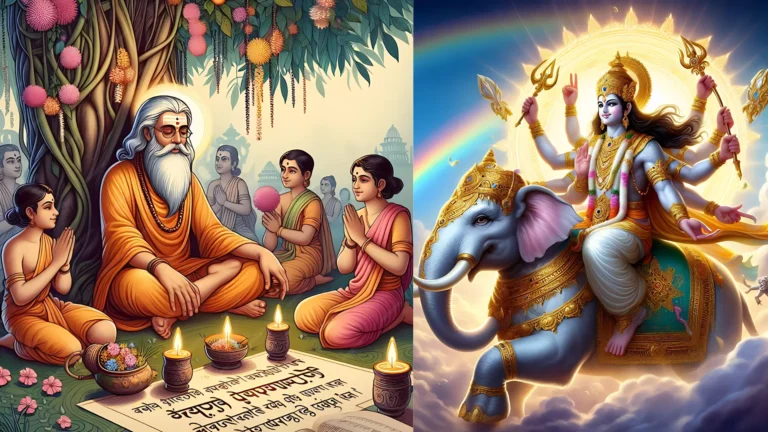Please Like the Blog and Share it for Maximum Reach
Table of Contents
Revelation of Sound Energy
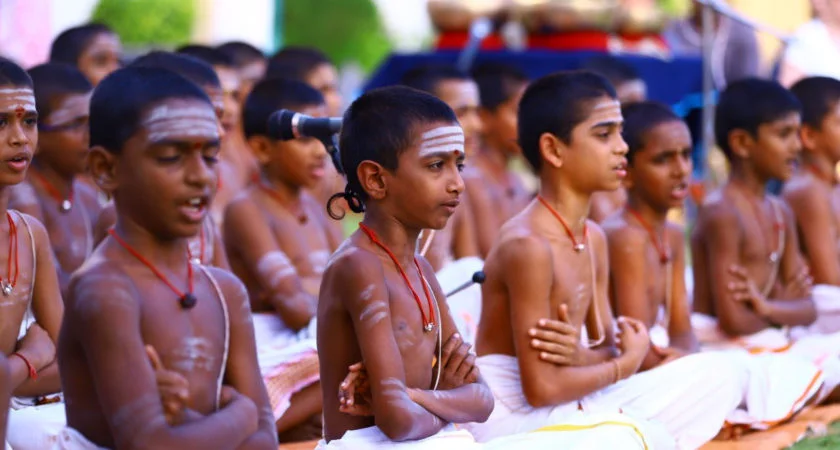
The Vedas are the sound of Ishwara (ईश्वर), the Supreme Being. This sound is revealed in four forms. The first manifestation is through Prana (प्राण), Life-Force. The second manifestation is through the Indriyas (इन्द्रिय), the senses, also known as Pasyanti (पश्यन्ति). The last manifestation is through articulate expression, known as Vaikhari (वैखरी). Articulation is the grossest expression of the divine sound-energy.
4 Gradations of Sound
The highest manifestation of sound-energy is also called the divine voice or “para” (परा). It is this divine energy that becomes the root-idea for thought. In “Para” the sound remains in an undifferentiated form. The four states of the Veda as Para, Pasyanti, Madhyama (मध्यम) and Vaikhari are the various gradations of sound. Madhyama is the intermediate, unexpressed form of sound. It has its source in the heart.

The seat of Pasyanti is in the naval or the Manipuraka (मणिपूरका) Chakra. People trained in Yoga, can have a subtle vision of the Pasyanti form of a “word” which has color and form, which is common for all languages and has the vibrational equivalence of the sound that represents the final Vaikhari, spoken word.
People of all colors whether Indians, Europeans, Americans or Africans, birds or beats experience the same emotional vibrancy of a thing in the Pasyanti state. Gesture is another universal translation of Pasyanti. It is one and the same for all persons. Any individual of any country shall make the same gesture universally if one is thirsty, that is hold one’s thumb near the mouth with backward movement of the head.
The Lord Manifests as Para
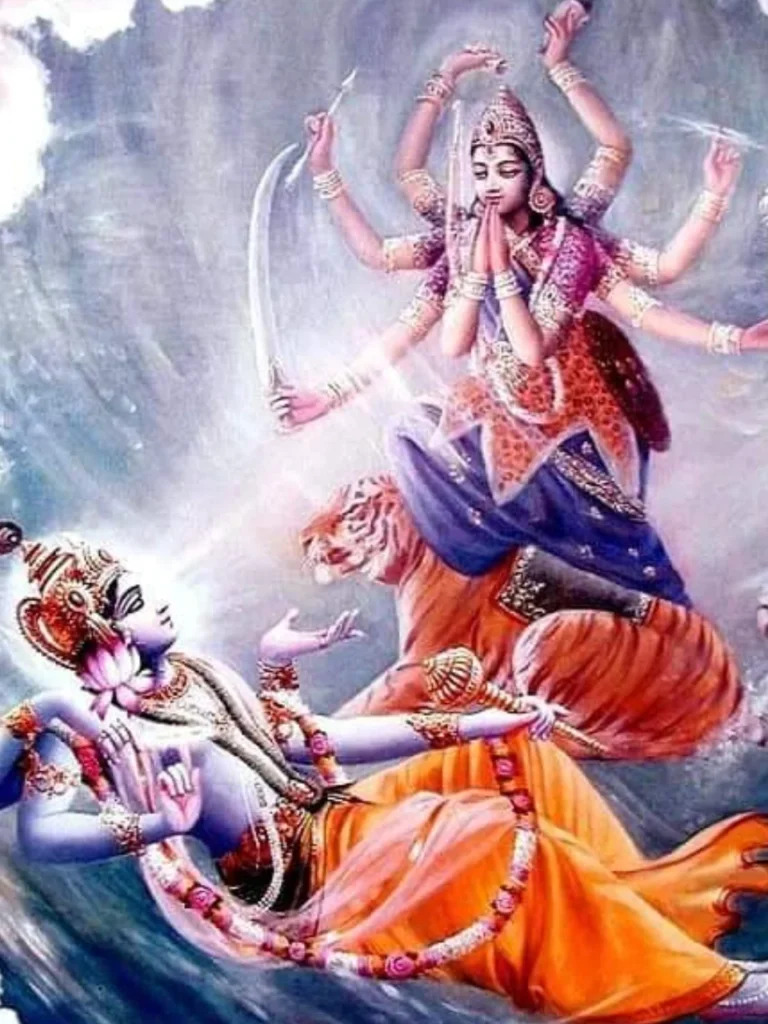
As one and the same power of Shakti working through the ears becomes hearing, through the eyes becomes seeing and so forth, the same Pasyanti assumes different forms of sound when materialized. It is the Lord Himself, who through the power of Maya, first manifests as Para in the Muladhara (मूलाधार) Chakra at the navel, then as Madhyama in the heart and then eventually as Vaikhari in the throat and mouth. This is the divine descent of the One, in the form of sound. All voices, all sound is Vaikhari alone, all are His voices. It is the voice of the Virat Purusha (विराट पुरुष).
What is Chitta Vritti (Vrittis)
Chitta (चित्त) is the mental substance. It takes various forms. These forms constitute Vrittis (वृत्ति). This gets transformed. The transformation or modification of Vrittis are the thought waves. If the Chitta thinks of a “thing”, the image is formed in the lake of the Chitta. This shall subside and another Vritti shall emerge giving rise to another image. Such countless Vrittis arise and fall on the ocean of the Chitta.

These Vrittis cause the restlessness of mind. It is to be understood that Vrittis are formed because of Samskaras (संस्कार) and Vasanas (वासना). The Samskaras and Vasanas are the millions of impressions on the mind, on the ocean of the unconscious. Vrittis themselves cannot be reversed automatically. Vasanas are those tendencies within the Chitta, formed because of impressions.
The Root Cause of Vasanas and Samskaras
When one were to root out the Vasanas, the tendency to hold Samskaras or impressions will also get effaced. Naturally, the Vrittis will stop arising within the lake of the Chitta. It is to be understood that Vasanas and Samskaras are formed due to “Karma” or action. Every action leaves its mark on the unconscious.
Most of the impressions have a tendency to be unresolved and cumulate through passage of time and lifetimes. These unresolved mind-tendencies are called Sanchita Karma (संचित कर्म), accumulated unresolved work impressions.
Only Spiritual discipline, when guided favorably into the lake of the Chitta, has the capacity to focus attention, life-force towards the unresolved Karma and resolve them. When focused attention is directed through the practice of Yoga, meditation, Jnana and Karma Yoga, the unresolved mind tendencies shall start popping out and burning away, when all unconscious patterns are discovered and weeded out through intelligence and right action.
How can Vrittis Dissolve?
As one enters spiritual discipline, Vrittis that emerge, shall be worked upon through attention and care, so that the actions do not give rise to further Samskaras or impressions. This deftness of action and resolution is applied to the emerging Vrittis. When intelligence is applied as in the case of the techniques of Karma Yoga, Vrittis start getting settled down, with sustained practice.

Furthermore, these Vrittis start reducing drastically with passage of time. As one pursues spiritual practices like chanting the Holy names of the Lord and Meditation, Yoga etc, the mind-stuff starts settling down and becomes calm and serene. The bombardment of thought-waves on the screen of consciousness shall start subsiding given one a clear vision and insight.
8 Questions from Sanatana Dharma
The scores generated in this Quiz are absolute. There are right or wrong answers to each Question. A percentage towards 100 indicates that you are more aligned to the overall subject matter.
Chasing Peace and Happiness is useless
Then the practitioner starts experiencing peace and bliss automatically. One need not chase peace and happiness, but one will be automatically followed by joy. As the samskaras start getting resolved, one needs to regulate action and bring about a positive change in one’s lifestyle. One should then refrain from any work or action that creates a ruffle in one’s mind. The inner conscience has to become a guide for one’s choice of work and actions proceeding further, as one becomes an adept in spiritual discipline.

Purity of mind leads to perfection in Yoga. One should regulate one’s conduct when one deals with others. As one develops in practice, one should refrain from feelings of jealousy towards others. When enviousness is observed, one should distance oneself from the object of jealousy. One should also refrain from competitive spirit towards others.
The key towards maintaining a balanced mind, is to be regular in one’s spiritual practice. Another important sign of progress is to have a keen longing for liberation and to develop intense Vairagya (वैराग्य) or to develop the renouncing spirit.
Please Like the Blog and Share it for Maximum Reach

